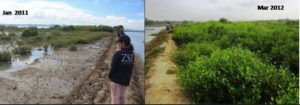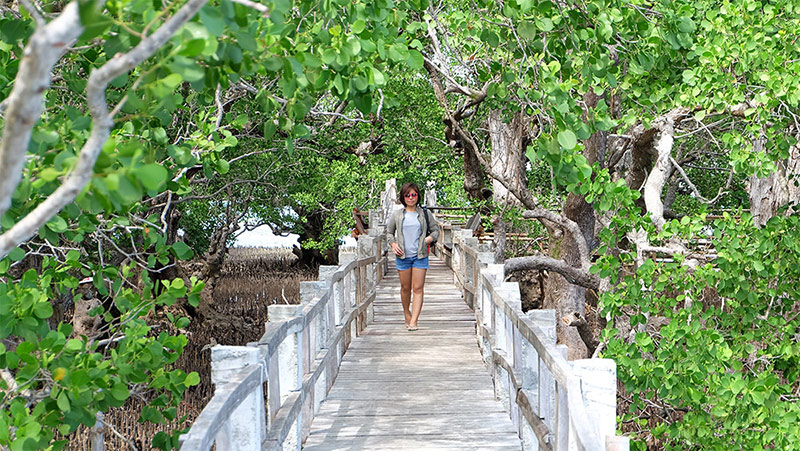The 15-hectare Katunggan Park in Barangays Gua-an and Nabitasan, Philippines, used to be fishponds. It’s now thickly covered with mangroves. It’s already becoming a magnet for birds, a variety of spawning fish species, mud crabs and other marine wildlife.

Photo credit: Jurgenne Primavera
From being an abandoned, underutilized and unproductive fishpond, proponents of the project reverted the area into the mangrove forest that was destroyed to create the failed aquaculture industry. They did it partly for climate-change mitigation and adaptation, and partly to turn the area into a tourist and learning destination.
Wilson Batislaon, municipal environment and natural resource officer (Menro) of Leganes said the project–which began in 2009–is a result of a partnership between the local government unit (LGU) of Leganes and the Zoological Society of London (ZSL), through its community-based Mangrove Rehabilitation Project.
From September 2009 to 2015, more than 86,000 mangrove seedlings were planted in the area.He said now that the mangrove forest in Leganes is thriving, fishermen themselves said their daily fish catch has improved.
The park now has 230 meters of elevated pathway made of wood and mostly bamboo materials. Visitors can also view the entire mangrove forest park from atop a viewing deck.
Feature photo credit: CamiguinGuide.com

